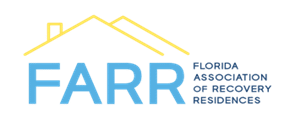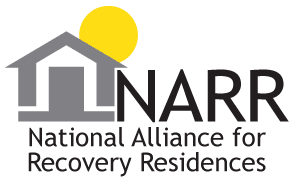When you’re dealing with a cough, you’ll do almost anything to feel better. That includes popping sticky pills and slurping sweet syrups. You’re hoping to suppress the hacking so your throat can heal, and over-the-counter solutions with dextromethorphan can do the trick. However, dextromethorphan, also known as DXM, provides a desired high which can lead to a deadly drug addiction.
Officials with the Consumer Healthcare Products Association say these products are non-narcotic and nonaddictive. But even so, there are many people out there who use DXM to get high, and some get addicted.
Most people who abuse DXM do so intentionally. They don’t begin by taking the stuff at the right dose and then creep into addiction by taking incrementally bigger doses. They put their mind to abuse the substance, and they use a great deal at once.
The Center for Substance Abuse Research says people with colds take about 30 mg of DXM every six to eight hours. People who take DXM to get high ingest up to 1500 mg in one sitting. Heavy users drink three or four bottles of cough syrup per day.
While a therapeutic dose might not cause big changes in thoughts or perception, a gigantic amount works completely differently.
DXM Effects
The National Institute on Drug Abuse says big hits of DXM are akin to taking a shot of PCP or some other dissociative drug.
- Disorientation or confusion.
- A sense of flying or being detached from reality.
- Hallucinations.
- Memory loss.
- Shifts in sensory perceptions, so colors seem brighter and shapes seem to move.
For some people, this altered state is incredibly intriguing. They can feel as though they’re in the midst of a religious experience, and they may emerge feeling transformed.
A user interviewed in an article for Psychopharmacology Bulletin said she loved DXM from the first moment she tried it. She kept using the drug because it was inexpensive and easy to buy, and she appreciated that it couldn’t be detected on most drug screening tests.
This woman isn’t alone. Plenty of people appreciate this drug’s power combined with its ease of use. They may also believe that the drug is somehow safe to use because it is sold in grocery stores and pharmacies rather than by street dealers.
How Common Is DXM Abuse and Addiction?
According to the Drug Enforcement Administration, there were more than 45,000 cases of DXM reported to poison control centers in 2013. Six of those cases led to death.
People of all ages abuse DXM, but it’s a drug of choice for young people. They may not be able to purchase alcohol due to their age, and they may be afraid to leap into street drugs. But they can buy cold remedies in most states, so this could be their only avenue to a high.
DXM abuse has also been linked to poverty. In fact, the drug is called poor man’s PCP in some parts of the country. Even large doses don’t come with an overwhelming price tag, and that can make it appealing for those without significant disposable income.
What Does DXM Abuse Look Like?
- Sedated. They may weave when they walk and slur when they talk. They may ask to sit or lie down, and they may drift off into sleep very quickly.
- Confused. They may say or do things that seem unusual. Some people even grow violent. They can’t be reasoned with, and their behavior may escalate if they’re confronted.
- Sick. They may complain of nausea, or they may vomit frequently. They may also have flushed skin and complain of a rapid heartbeat.
- Drunk. Staggering, slurred speech and nausea can come with alcohol intoxication too. Some people who abuse DXM abuse alcohol at the same time.
When the high wears off, users may leave telltale hints behind. Some indicate that a binge has passed, and others suggest that a new problem is about to emerge. Users might:
- Have trash to dispose of. Empty bottles and boxes that once held DXM could clog up your recycle bins.
- Get unexplained packages. DXM in powdered form is available online, and it can be shipped right to your house.
- Use strange terms. Users might call their DXM abuse robotripping or dexing. They might also refer to the drug as skittles, CCC, or robo.
- Steal. Medications may go missing from your bathrooms, or cash could disappear from your wallet.
- Make new friends. Unusual people who seem just as impaired as the one you love may appear in your home.
These are hard changes to live with, and they can leave you feeling worried or even a little distressed. They can also be hard for the person you love to deal with. All of these changes are indicators of pain. You can help.
If you suspect that someone is abusing DXM, start a conversation. Outline the changes you’ve seen, and discuss your fears and concerns. Give the person room to confide in you, but know that may not happen right away. It’s okay. This may be a conversation you have multiple times until the person you love feels comfortable opening up and asking for help.
Learning more about how treatment works can also help you have a conversation with meaning. People dependent on DXM may have no idea that there are solutions available.

DXM Addiction Treatment Can Help
DXM is far from benign, and people who abuse the substance over a long period may need the help of an addiction treatment team to get better.
Researchers say that people with a long history of DXM abuse can develop a long-lasting withdrawal syndrome that causes these symptoms within the first week:
- Severe vomiting
- Aching muscles
- Diarrhea
- Cravings for drugs
When that fades, they may experience these long term symptoms for another three weeks:
- Anxiety
- Cold intolerance
- Insomnia
- Night sweats
These are terrible symptoms, and they are made worse by a relentless craving for DXM.
DXM Withdrawal
There is no medication explicitly designed to ease DXM withdrawal, but doctors can use drugs to alleviate symptoms when they arise. Doctors can also use fluids to ensure that dehydration doesn’t take hold during detox. That can be a life-threatening consequence of severe vomiting, so it’s crucial for people to get treatment help.
After detox, people need to learn how to live without DXM, and that’s what rehab can do. Here, people are paired with a treatment team of mental health professionals. They work together to unpack the origin of the addiction, including the triggers that seem to make drugs seem more attractive. Then, they determine what techniques work best against each trigger.
It can take weeks or even months to move through a rehab program, and some people need to move into recovery facilities to ensure they don’t relapse before their work is done. But it isn’t a painful process.
During rehab, some people address lingering hurts and painful memories that have plagued them for years. They develop coping skills that can help them avoid a relapse and skills that can help them have closer relationships with the people they love. They establish the lives they always wanted.
Rehab is also communal, and it allows people with addictions to meet others just like them. Addictions can be isolating, and for some people, this is the first opportunity they’ve had to connect with others who understand them. For some, this is the best part of rehab.
By speaking up when you spot addiction, you’re helping the person you love to find this future. It could be the kindest thing you’ve ever done.
Treat DXM Addiction at our Rehab Center in South Florida

Dr. Alam is an internationally renowned psychiatrist with academic affiliations with Northwestern University and University of Illinois, Chicago where he completed his residency training. He has been a principal investigator for over forty studies and has been involved in research leading to the approval of most psychiatric medications currently on the market. He is the founder of the Neuroscience Research Institute which continues to conduct research on cutting edge medication and interventional psychiatry. Dr. Alam is a Distinguished Fellow of the American Psychiatric Association and the American Society of Addiction Medicine. He has won several awards and has been featured extensively on radio and television.










